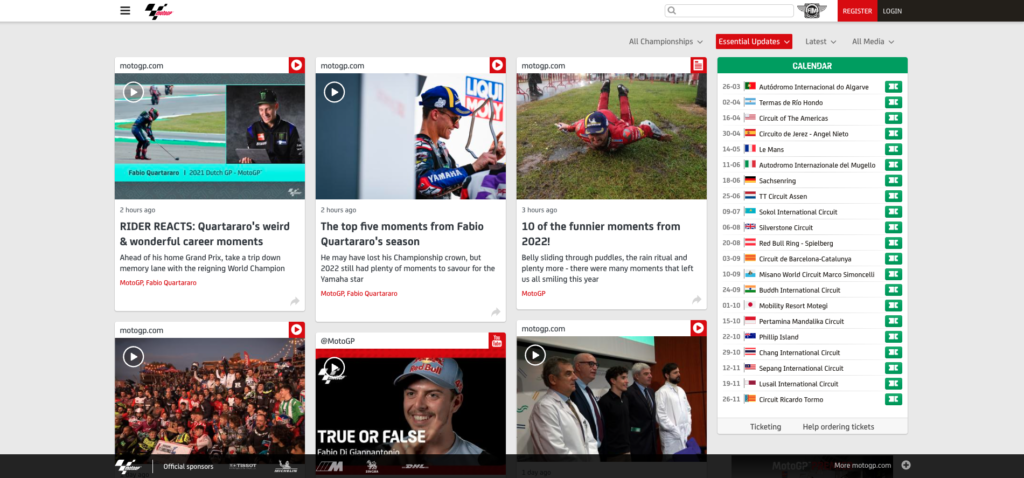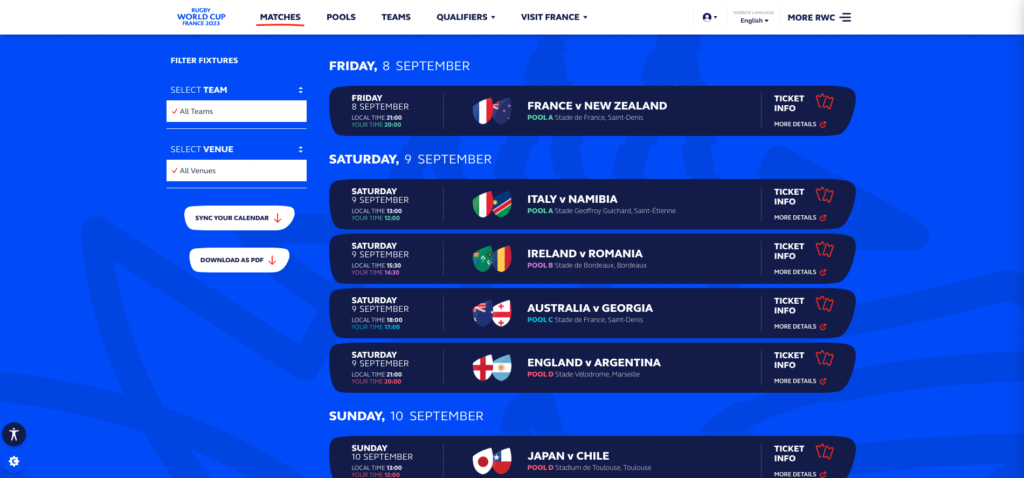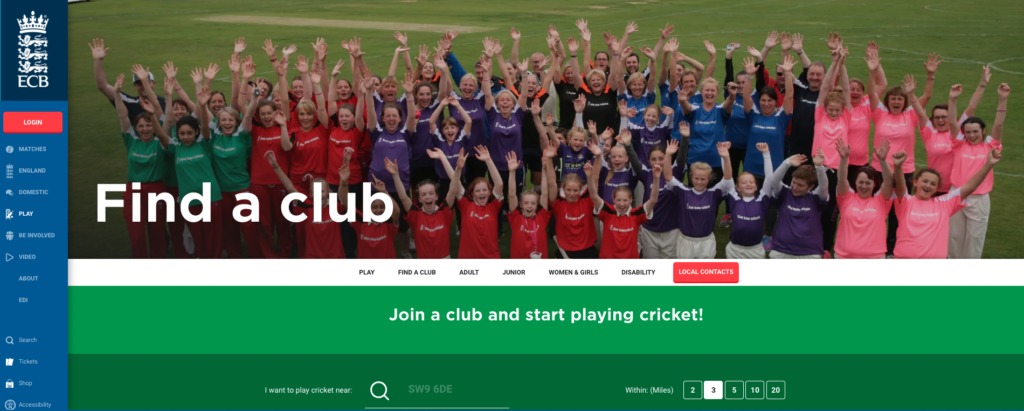Millennials enjoy sports just as much as any other generation, it’s how they consume it that matters. So how can the sports industry get this generation out of their homes and into their stadiums?
Encouraging millennial participation in sport
The sports industry is faced with an uphill battle as millennials and the younger generation appear to have far less interest in attending professional sport events than their older counterparts.
Whilst ticket costs may be by far the biggest contributing factor to this decrease in participation (not unsurprising for a budget-conscious generation), it’s not the only reason why millennials are ‘sitting on the bench’ when it comes to attending in-person sporting events.
Experts have alluded to the idea that technology has played its part!
With high definition TVs being commonplace in many households, and devices such as tablets and smartphones offering event streaming, post-game recaps, tweets and video highlights at your fingertips, it’s no wonder that many are opting to participate from the comfort and convenience of their own home.
But is this really a substitute for the real thing?
This blog post looks to uncover how the website can be used to help generate awareness of sporting events, to watch and partake in, and encourage millennials to get ‘back in the game’.
Profiling the Millennial Sports Fan
There’s a common misconception that the disengaging of millennials from attending live sporting events is because of a lack of interest in sports in general.
In fact, millennials enjoy sports just as much as any other generation – it’s just the way that they consume these sports that differs.
A study by Comscore found that only two out of ten millennials enjoy watching traditional television, with the majority having a preference for online platforms like YouTube, with a whopping 87% of millennials registered on the video platform as of May 2022 (Source: Statista).
This has meant that with the reliance on technology, millennials have largely contributed to the decrease in live TV ratings and live event attendance, instead opting for media that they can consume for far less.
Is that not to be expected from a generation of budget-conscious sports fans who are the first post-war generation to earn less than their older counterparts?
And does it mean that millennials will never flock through stadium turnstiles again?
Or will drastically reducing ticket prices be the answer?
In short, no!
Instead the sports industry needs to understand their audience better, with 75% of millennials valuing experiences over material items. It’s the perceived value, not affordability that matters.
So where many argue that technology is to blame for the decline and that sports are losing ‘millennial’ fans – we argue that this is not the case.
The key is to offer millennials an experience worth the ticket price, starting way before they even enter the stadium.
And it starts with the website!
How can you cater for the millennial fan on your sports website?
Encouraging attendance
For any sports website, there are some clear points which should be addressed to create an impact, build the experience and generate the emotional investment from your millennial audience to ignite that spark to experience the buzz of the event first hand.
We’ve listed just a few of these below:
Your brand identity – Millennials form emotional connections with brands with a study by Khoros showing that 60% of millennials have been loyal to specific brands for over 10 years! So having a clear brand identity is integral. This means that your logo needs to be placed properly and prominently on your website, across your social channels and sports venues for brand recognition. Other elements in your brand guidelines should also be utilised correctly to create consistency for any medium that is representative of your brand identity.
 Image source: https://thisaway.co/work/england-rugby
Image source: https://thisaway.co/work/england-rugby
Build a community – Millennials are lovers of connectivity and even amongst thousands of people in a stadium, they’re looking for belonging and want to be heard and valued. Give them a glimpse behind the scenes with website News & Blogs. An online forum is also great at providing a platform for fans to connect with one another. But be cautious, sporting audiences are prioritising online spaces which foster inclusivity and positivity, so forums should be policed to ensure that they’re a safe space for all fans.
Visual content over written – Using rich media, photos and video speak volumes and satisfies shorter attention spans. A dedicated multimedia section on your sports website is a must; including everything from photos, videos and audio as this type of media drives up engagement. Your media can take the form of interviews, training videos, interviews with the team or even a POV from the stands. The cheering or jeering of the crowd is sure to capture the adrenaline-fuelled antics on match-day.
Humanising sports stars – Millennial sports fans want a deeper, emotional affinity with sports stars, which is why intimate, human-led storytelling can bring them closer to sport. As such player profiles are a great way of showcasing a team’s players stats, and supporting bios can offer an insight into the personalities of the stars to provide that relatability that the millennial audience will respond to. Arsenal FC have a great example of this.

Schedules to show upcoming events – Schedules are important to advise the audience about any upcoming events and contain key information such as date, time, location and the competition. These schedules should almost always be accompanied by a call to action to BOOK NOW or similar for easy-access to purchase tickets, as shown on the Rugby World Cup website. A Read more is also a great way to add more information about the event, or link to relevant promotional content on the site for any content encompassing the pre-game buzz.

Social walls – For a demographic that engages heavily with social media, a social wall on your sports website is a fantastic way to keep content dynamic and fresh, and appeal to the familiarity of the millennial audience. Ferrari has a great example on their F1 website.

Touring the venue – Going back to the idea that millennials would attend games offering a complete social experience, the venue matters. That’s why it’s important to offer a glimpse into your venue and the amenities within your website experience. Do you have any instagram-worthy areas, social spaces or cool-quirky features? A venue tour, be it interactive, video, or image gallery in orientation, is a fantastic way to capture the attention of your millennial audience. Or for the more logical, Wembley offers a great bit of tech to visualise your view from the stands.
Encouraging participation
Whilst we have heavily focused on encouraging attendance, we can’t neglect to mention that with the power of digital, anything is possible and as such your sports website can also be used to encourage participation in sports.
The points mentioned above, whilst ultimately shaping the ‘experience’ that live sports can offer the millennial audience, also creates the stepping-stones for igniting passion for the sport and perhaps even the curious on how to get involved themselves.
In a previous blog article, how to use your website to promote your sport, we touched upon how your website can encourage participation, but here’s a quick recap below of the points that we haven’t yet mentioned above.
- Drive website engagement by understanding your audience types. Whether a spectator, volunteer or industry professional, each group should be served content relevant to them. Want to encourage participation? Have clear signposts to content about how to get involved to educate and inform. Use real-life examples from blogs, testimonials, videos etc to reinforce your message.
- Make the sport accessible by including a Club Finder or directory on your website. Include contact information and visual content or guides surrounding the sport to help remove the barrier between the knowledge and understanding of the sport.

Our takeaways
Technology can be used as a force for good to encourage attendance and participation in sports from the millennial audience.
The industry just needs to adapt to understand what’s important to this demographic, which is a value for experiences, rather than material things. Millennials require an experience that encompasses a sense of community and belonging, to nurture those aspiration-lead decisions, which hopefully culminates into those all important ticket sales.
We must acknowledge that the reach of technology has been vast, allowing the industry to reach a larger audience. Whether it’s, attracting new fans and followers who are united in a shared passion and an emotional connection to the brand, or with brand ambassadors such as its team members and their stories.
One thing is for sure, the importance has and always will be to strive to understand your audience and evolve your offering to speak to those groups so that they become part of your brands ‘team’.
And going back to your website, more often than not, it’s this that will provide that all important ‘digital first impression’.
As such your sport website needs to be an integral part of the wider experience – truly encapsulating the excitement of the sport, defining your narrative, and aid in coaxing those millennials’ bums off their seats and through the turnstiles once more.
